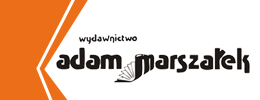REQUIREMENTS FOR ARTICLE DESIGN
- an article shall be an integral paper of a scientific content including the findings of the author’s original research;
- article volume is a minimum of 20 pages; A4, line space 1,5; Times New Roman, point size 14; all fields – 20 mm.
GENERAL STRUCTURE OF THE ARTICLE
- author’s surname and initials; academic degree and rank, post, place of employment; address of the place of employment (in English);
- ORCID ID. If the author doesn’t have an account in ORCID, it is obligatory to sign up for the account at the link http://orcid.org/;
- article title;
- a paper shall have the following structure: a brief introduction (1–2 pages), 2–3 equivalent subsections and conclusions (1 page), summary (7– 10 sentences; to state a problem and research findings);
- the article shall include page-oriented citations as well as References at the end of the paper. Citations shall be marked with a number without brackets and dots using Microsoft Word references
- Attention! Per page citations and References are at the end of the paper and designed in compliance with APA Style Reference Citations (download an example).
- To improve the quality level of scientific citations in the scientometric database Open Ukrainian Citation Index (OUCI), it is important to indicate DOI for every source which it has.
Every article included in a collective monograph is awarded DOI.
EXAMPLE OF ARTICLE DESIGN
REGULATION ON ELECTIONS AND ELECTORAL
ENGINEERING IN POLAND (1989–1993)
Yan Kovalskyi
INTRODUCTION
Electoral reforms had profound political consequences for postcommunist Poland. The majority system promoted the fall of communism, while later changes to the electoral law helped the former communists to reclaim power1. […]
1. Section title
Text Text
2. Section title
Text Text
CONCLUSIONS
The reasons for their miscalculations included a lack of methodological expertise, unexpected shifts in voter preferences, transitionspecific poll biases, as well as new entrants and coalitions that emerged in the period between the introduction of the new electoral law and elections. […]
SUMMARY
The article deals […]
REFERENCES
1. Sulek A. (1994) Do czego su sondae? Wykorzystanie bada opinii publicznej w kampanii wyborczej 1993. Kultura i Spoeczestwo, vol. 38(3). pp. 103–117. DOI 10.1016/355-6642/45-58
2. […]
Information about the author:
Yan Kovalskyi,
Prof. dr hab.,
Dean of the Faculty Governance and in Particular,
The Nicolaus Copernicus University in Torun
11 Gagarina str., Torun, Poland, 87-100
ORCID ID: orcid.org/0000-0012-9706-0306
If you have any questions, please, address contacts.




